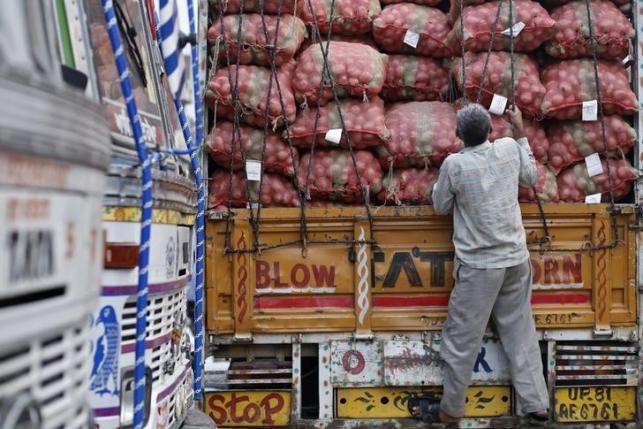It is doubtful that our political masters are even aware of the features of the Model Law, say Satya Poddar & Venkatesh Narayan.
 The release of the Model GST Law is a milestone in the unending journey of transformational reform of our indirect tax system.
The release of the Model GST Law is a milestone in the unending journey of transformational reform of our indirect tax system.
It reflects the determination of the government to implement the goods and services tax at the earliest.
The Model Law has been several years in the making and is a product of intense debates and controversies in the drafting committee of Centre and state officials.
The final outcome is a mixed bag of good, bad and ugly. It will please some, but displease many.
Fortunately, it is still a draft, and provides an opportunity for our legislators to pause and reflect whether they should embrace it or send it back to the drawing board.
In evaluating the Model Law, one has to be cognisant of the fact that GST in India will not be a single tax, but a set of 38 different taxes, 36 state taxes (SGSTs, one each for the 29 states and seven Union Territories), the Centre GST (CGST), and the Integrated GST (IGST) on inter-state supplies.
To avoid the tax jungle of disparate laws and compliance procedures, the governments have aspired for full harmonisation of virtually all aspects of the Centre and state taxes, including the tax base and registration, reporting, payment and refund rules and procedures.
This is indeed the most unique and essential feature of the Model Law. It does not exist anywhere else in the world, and without it the GST reforms would come to naught.
While consensus on full harmonisation is an outstanding achievement, it has not been easy and the Centre has had to concede to virtually all the demands of the states.
The model that has emerged is the lowest common denominator, which dilutes substantially both its economic efficiency and simplicity.
The draft law itself is a witches’ brew, concocted by mixing the most toxic sections from the legacy Centre and state laws: taxable supplies defined expansively to catch any inter-state activities between two arms of the same person, complex valuation rules prescribed for supplies without consideration, credits denied for construction inputs, credits delayed until tax actually paid by the supplier, refunds of excess credits restricted and requiring discretionary approval of officials and harsh penalties and punishment prescribed for gaps in compliance.
The states have insisted that dealers register for GST in each state from where they supply goods and services and remain subject to their physical control and monitoring much like under the current value-added tax.
Each registration will be treated as a separate person. This means that they would need to file separate returns for each state where they are registered and prepare and maintain financial accounts state-wise.
Their output tax collections and input tax credit claims need to be segregated for each registration and each tax (potentially 216 ledger accounts) and cannot be pooled, not even the CGST in different states.
Any CGST due for one registration has to be paid, and a credit balance for another registration can only be carried forward to be utilised against future tax liabilities of that registration number.
The Model Law embargoes any refund of the credit balance, except where it is on account of exports or inverted duty structure (inputs taxed at a rate higher than outputs).
The Ease of Doing Business ranking of India would take a knock under this system. The worst impacted would be those in the service sector with pan-India operations, for example, telecom operators, national airlines and financial institutions.
Their annual tax compliance steps could go up from less than 20 (two semi-annual returns and 12 monthly payments), to as many as 1,600 (36 registrations, 4x12 returns per registration, 12 monthly payments per registration for at least three of the 38 taxes, 36 annual returns…).
The ugliest part of the Model Law is the valuation rules for taxation of self-supplies of goods and services between two arms of the same legal entity, the so-called “supplies without consideration”.
The Model Law defines supplies to include any inter-state movement of goods, or inter-office activities or functions within an organisation.
The head office interacting with its production plant or distribution centre in another state will now be considered to be rendering a service, which would need to be valued and recorded in the books of account and then tax remitted on it.
The same would apply to the marketing or business development support provided by a group in one state to fellow team members in another state.
This is the elephant in the room. The rules are similar to those for transfer pricing and Customs valuation for international transactions.
They are at the root of transfer pricing litigation and have given the Indian tax administration a bad name for being the most aggressive in the Asia-Pacific region, if not the whole world.
They are unnecessary under the GST law, unworkable, and will be tantamount to creating inter-state fiscal frontiers, impeding free flow of goods and services within the common market of India.
The volume and complexity of such mythical supplies would dwarf the compliance obligations of dealers for real third-party transactions.
In the rest of the world, such activities within the domestic market are neither recognised nor made subject to tax.
The tax is limited to transactions between two legal entities made for a consideration. Valuation rules are needed only in select cases such as for fringe benefits to employees.
Why have these rules been included if they are neither necessary nor workable? Certainly, they serve no political, economic, or social purpose.
It is doubtful that our political masters are even aware of such features of the Model Law.
They will not be the harbinger of achhe din. They are not the GST the business community is clamouring for.
Let us hope that they would be filtered out of the draft law before it is enacted by Parliament.
Satya Poddar is a senior tax advisor with EY; Venkatesh Narayan is executive director, Tax & Regulatory Services, EY. The views expressed are personal.








